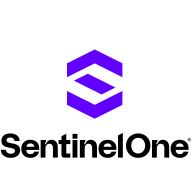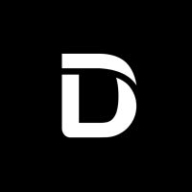


Darktrace and Microsoft Defender for Cloud are prominent players in the cybersecurity space, focusing on network and cloud security solutions, respectively. While both excel in different areas, Darktrace's strength lies in its AI-driven threat detection and network insights, whereas Microsoft Defender for Cloud is particularly strong in its seamless integration with the Microsoft ecosystem, making it appealing for enterprises already committed to Microsoft services.
Features: Darktrace's Enterprise Immune System and AI-driven analytics offer fast threat detection and extensive network visibility, which allows for autonomous threat responses and meaningful alerts. Meanwhile, Microsoft Defender for Cloud provides robust integration across Microsoft services such as Azure and Office 365, offering AI-driven threat detection, compliance recommendations, and visibility across workloads.
Room for Improvement: Darktrace could improve endpoint protection, decrease false positives, and offer better third-party integrations. Enhancements in user interface simplicity and pricing options could also benefit users. Microsoft Defender for Cloud needs to improve its interface consistency and refine alerts for more precision. Better integration with non-Microsoft cloud services, simpler pricing, and improved on-premise support could enhance its offerings.
Ease of Deployment and Customer Service: Darktrace is known for its quick deployment in hybrid and on-premise setups, with customer service praised for competence and global reach, though response speed could improve. Microsoft Defender for Cloud is straightforward to set up, particularly in cloud and hybrid environments, excelling in user-friendliness and integration within the Microsoft ecosystem, though its extensive integrations can pose some difficulties.
Pricing and ROI: Darktrace is often seen as expensive, making it challenging for smaller enterprises. Nonetheless, it delivers significant ROI through effective threat mitigation and enhanced visibility. Microsoft Defender for Cloud offers a flexible pricing model with both free and paid options. Although potentially costly, especially with advanced features, it is considered cost-effective due to its deep integration with Microsoft services, efficiently managing complex threats.
The detailed information PingSafe gives about how to fix vulnerabilities reduces the time spent on remediation by about 70 to 80 percent.
After implementing SentinelOne, it takes about five to seven minutes.
Cloud Native Security does offer ROI.
Other NDR solutions provide virtual appliances that can be deployed on virtualization servers to get up and running quickly.
Using this solution provides financial benefits by securing from server attacks, which offers indirect savings.
Defender proactively indexes and analyzes documents, identifying potential threats even when inactive, enhancing preventative security.
Identifying potential vulnerabilities has helped us avoid costly data losses.
The biggest return on investment is the rapid improvement of security posture.
When we send an email, they respond quickly and proactively provide solutions.
They took direct responsibility for the system and could solve queries quickly.
Having a reliable team ready and willing to assist with any issues is essential.
The technical support from Darktrace is of high quality.
Darktrace provides excellent technical support with a monthly meeting to review platform incidents, ensuring the system functions as expected.
The challenge lies in waiting for a response after logging a ticket.
Since security is critical, we prefer a quicker response time.
The support team was very responsive to queries.
They understand their product, but much like us, they struggle with the finer details, especially with new features.
I would rate it a 10 out of 10 for scalability.
Scalability is no longer a concern because Cloud Native Security is a fully cloud-based resource.
I would rate the scalability of PingSafe 10 out of 10.
Darktrace has high scalability, and I would rate it a nine out of ten.
Since it's cloud-based, it expands easily.
There is still a gap in terms of storage, and we are trying to figure out how to increase that capacity for regulated environments, which require data retention for 5 to 6 years.
We are using infrastructure as a code, so we do not have any scalability issues with Microsoft Defender for Cloud implementation because our cloud automatically does it.
It has multiple licenses and features, covering infrastructures from a hundred to five hundred virtual machines, without any issues.
Defender won't replace our endpoint XDR, but it will likely adapt and support any growth in the Microsoft Cloud space.
It's a reliable solution that the organization is increasingly adopting for its robust features and security.
We contacted Cloud Native Security, and they addressed it in a day.
The only downtime we had was when switching from V1 to V2 but it was smooth.
The stability of Darktrace is excellent, rated ten out of ten.
The appliance itself has never let me down.
For stability, I would rate Darktrace an eight out of ten.
Defender's stability has been flawless for us.
Microsoft Defender for Cloud is very stable.
Microsoft sometimes changes settings or configurations without transparency.
If they can merge Kubernetes Security with other modules related to Kubernetes, that would help us to get more modules in the current subscription.
As organizations move to the cloud, a cloud posture management tool that offers complete cloud visibility becomes crucial for maintaining compliance.
I would also like to see Cloud Native Security offer APIs that allow us to directly build dashboards within the platform.
There is no dedicated salesperson in Egypt, and having one would help to improve focus on this market.
They say they can integrate with most firewalls, but when we did an integration with Meraki MX firewalls, that integration didn't work and still doesn't work to this day.
We need Darktrace on each branch to get the data out, and I suggest having some kind of a centralized product that gets data from multiple sources to aggregate and provide the data.
Microsoft, in general, could significantly improve its communication and support.
It would be beneficial to streamline recommendations to avoid unnecessary alerts and to refine the severity of alerts based on specific environments or environmental attributes.
The artificial intelligence features could be expanded to allow the system to autonomously manage security issues without needing intervention from admins.
I believe the enterprise version costs around $55 per user per year.
There are some tools that are double the cost of Cloud Native Security.
I recall Cloud Native Security charging a slightly higher premium previously.
The product is considered expensive compared to others.
The pricing is costly in USD, and they charge based on device counts.
The licensing cost is approximately eight dollars a year.
Every time we consider expanding usage, we carefully evaluate the necessity due to cost concerns.
We appreciate the licensing approach based on employee count rather than a big enterprise license.
Microsoft Defender for Cloud is pricey, especially for Kubernetes clusters.
This helps visualize potential attack paths and even suggests attack paths a malicious actor might take.
The infrastructure-as-code feature is helpful for discovering open ports in some of the modules.
This tool has been helpful for us. It allows us to search for vulnerabilities and provides evidence directly on the screen.
It is capable of responding to lateral movement and ransomware deployment within environments where there is data exfiltration.
I do not need to manually process incidents as Darktrace provides an incident summary, potential detection paths, and other details, all exportable with just a click.
If I am in a data center where I don't have layer two, it becomes an issue because the autonomous response is reliant on sending spoofed TCP resets to my core switch to block traffic, which is a major issue.
The most valuable feature for me is the variety of APIs available.
This feature significantly aids in threat detection and enhances the user experience by streamlining security management.
The most valuable feature is the recommendations provided on how to improve security.
| Product | Market Share (%) |
|---|---|
| SentinelOne Singularity Cloud Security | 3.6% |
| Microsoft Defender for Cloud | 9.3% |
| Darktrace | 1.8% |
| Other | 85.3% |



| Company Size | Count |
|---|---|
| Small Business | 46 |
| Midsize Enterprise | 20 |
| Large Enterprise | 53 |
| Company Size | Count |
|---|---|
| Small Business | 44 |
| Midsize Enterprise | 19 |
| Large Enterprise | 29 |
| Company Size | Count |
|---|---|
| Small Business | 26 |
| Midsize Enterprise | 7 |
| Large Enterprise | 45 |
SentinelOne Singularity Cloud Security offers a streamlined approach to cloud security with intuitive operation and strong integration capabilities for heightened threat detection and remediation efficiency.
Singularity Cloud Security stands out for its real-time detection and response, effectively minimizing detection and remediation timelines. Its automated remediation integrates smoothly with third-party tools enhancing operational efficiency. The comprehensive console ensures visibility and support for forensic investigations. Seamless platform integration and robust support for innovation are notable advantages. Areas for development include improved search functionality, affordability, better firewall capabilities for remote users, stable agents, comprehensive reporting, and efficient third-party integrations. Clarity in the interface, responsive support, and real-time alerting need enhancement, with a call for more automation and customization. Better scalability and cost-effective integration without compromising capabilities are desired.
What are SentinelOne Singularity Cloud Security's standout features?SentinelOne Singularity Cloud Security is deployed in industries needing robust cloud security posture management, endpoint protection, and threat hunting. Utilized frequently across AWS and Azure, it assists in monitoring, threat detection, and maintaining compliance in diverse environments while providing real-time alerts and recommendations for proactive threat management.
Darktrace is a leading cybersecurity solution that leverages artificial intelligence and machine learning to provide advanced threat detection, response, and risk management capabilities. Many reviewers find Darktrace's AI and machine-learning capabilities to be valuable. They appreciate its ability to detect anomalies and threats that might go unnoticed by traditional security tools. Overall, the general sentiment towards Darktrace from reviewers is positive. Users seem to appreciate its scalability, stability, AI capabilities, visibility, and ease of use.
Darktrace offers a proactive and intelligent approach to cybersecurity. It utilizes AI algorithms to learn and understand the 'pattern of life' for every user and device within a network. This understanding enables it to detect anomalies that could signify a cyber threat, from subtle insider threats to more obvious ransomware attacks.
Its adaptability, autonomous response features, and comprehensive network visibility make it a top-tier solution for different sizes of organizations and across many industries. It was named one of TIME magazine’s ‘Most Influential Companies’ in 2021 and protects over 8,800 organizations globally from advanced cyber threats.
Darktrace Cyber AI Loop
The Darktrace Cyber AI Loop introduces an advanced artificial intelligence-based system for cybersecurity, designed to build a self-improving defense mechanism. This system functions like a closed loop, where each stage feeds information and insights into the next, amplifying the overall effectiveness of the platform.
The key components of the loop are:
Darktrace's AI algorithms can identify threats that traditional security tools might miss. It continuously learns and updates its understanding of what is normal for each environment, ensuring that it can quickly detect and respond to unusual activities that could indicate a breach. Darktrace's Antigena module can autonomously respond to threats in real time. This is particularly crucial in containing fast-moving threats like ransomware, where every second counts.
Darktrace's solution provides unparalleled visibility into all parts of the network, including cloud services, IoT devices, and industrial control systems. This comprehensive coverage ensures that no part of the network is left unprotected. However, while the Darktrace Cyber AI Loop offers a robust solution, it is not a complete cure-all and requires careful implementation and integration with existing security frameworks.Darktrace offers a comprehensive and unified approach to cybersecurity. It provides continuous protection against known and unknown threats, regardless of where they emerge. Darktrace's solutions provide visibility into your cloud infrastructure, continuous monitoring of application usage and communication patterns (e.g., identification of suspicious actions like unauthorized data access), comprehensive email security that goes beyond traditional spam and phishing filters, real-time protection for endpoints, and continuous monitoring of network traffic and device activity.
Darktrace also provides specialized coverage to secure your zero-trust architecture. Identifies compromised identities, unauthorized access attempts, and risky data exfiltration within a least-privilege environment. Finally, it has a dedicated solution for safeguarding industrial control systems and critical infrastructure. Monitors communication patterns, device behavior, and physical access within OT environments, protecting against operational disruptions and cyberattacks.
Microsoft Defender for Cloud is a comprehensive security solution that provides advanced threat protection for cloud workloads. It offers real-time visibility into the security posture of cloud environments, enabling organizations to quickly identify and respond to potential threats. With its advanced machine learning capabilities, Microsoft Defender for Cloud can detect and block sophisticated attacks, including zero-day exploits and fileless malware.
The solution also provides automated remediation capabilities, allowing security teams to quickly and easily respond to security incidents. With Microsoft Defender for Cloud, organizations can ensure the security and compliance of their cloud workloads, while reducing the burden on their security teams.
We monitor all Cloud Security Posture Management (CSPM) reviews to prevent fraudulent reviews and keep review quality high. We do not post reviews by company employees or direct competitors. We validate each review for authenticity via cross-reference with LinkedIn, and personal follow-up with the reviewer when necessary.